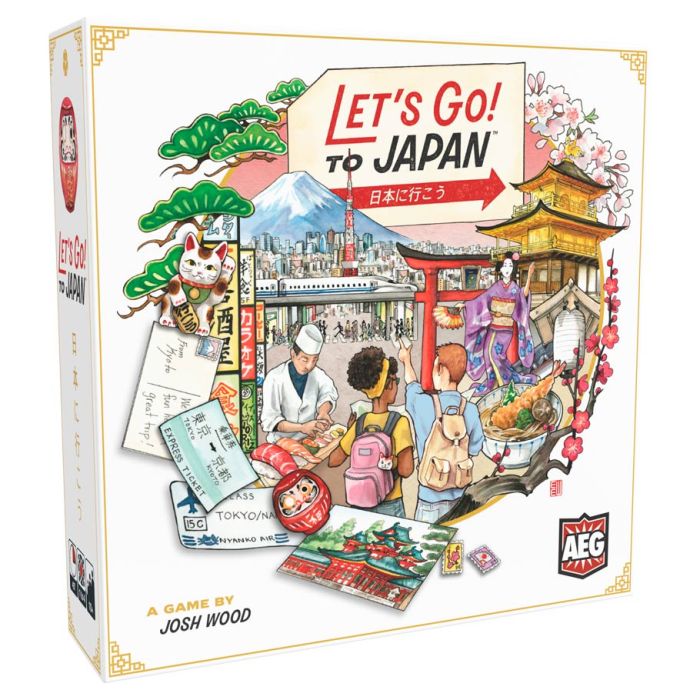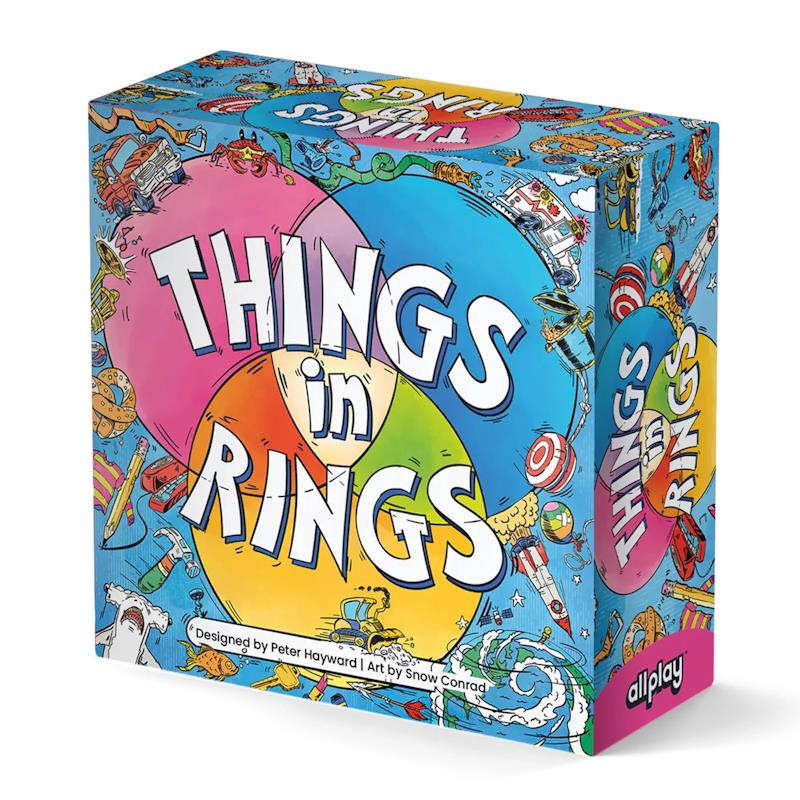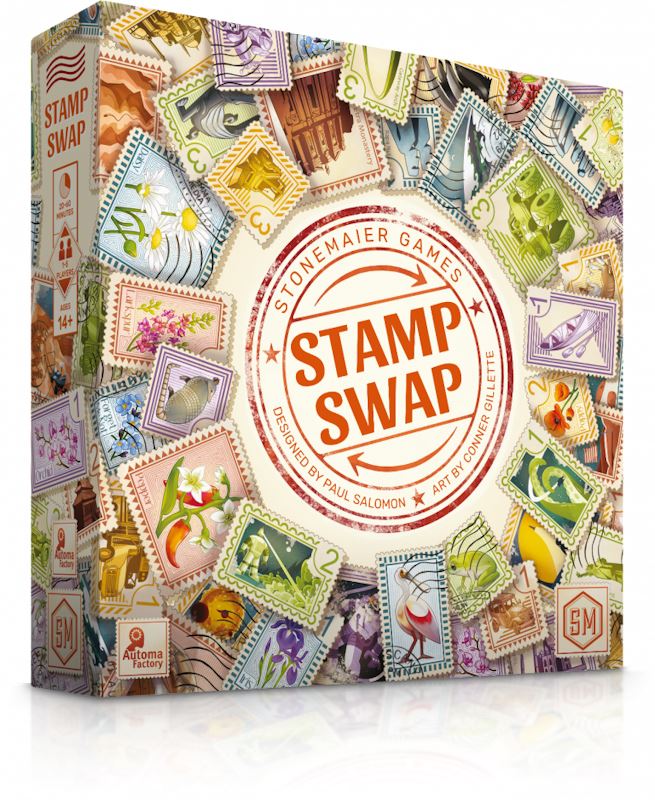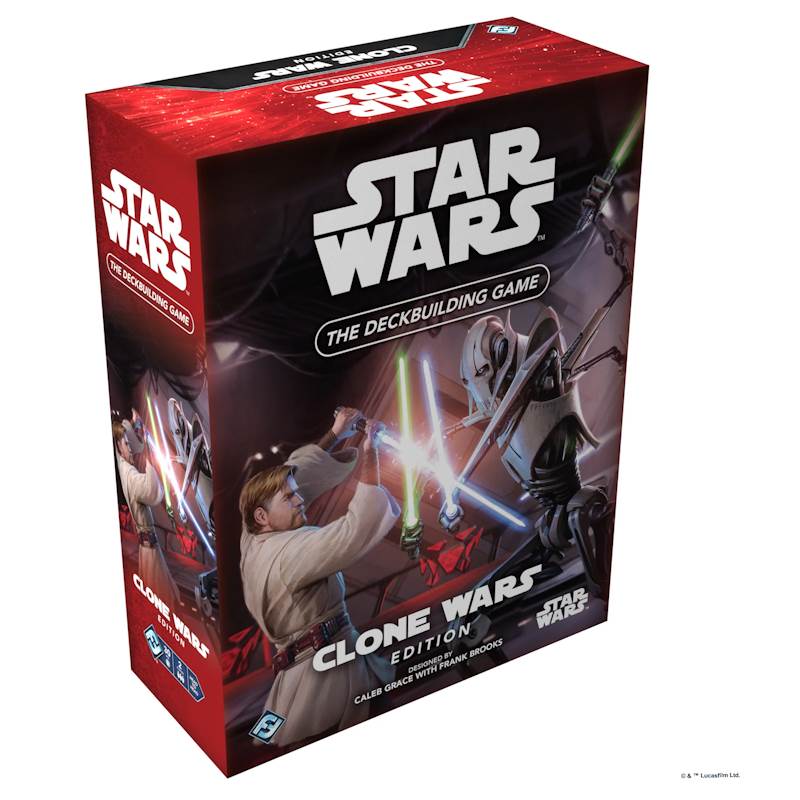Looking for the top 12 board games 2024 to play with the family, or to help ease a new group into game nights? Read on for a selection of 2024’s greatest games for players venturing beyond Monopoly and Risk. Below we’re hitting twelve titles great for folks getting their proverbial tabletop feet wet, though most of these will grow right along with you, providing entertainment, strategy, and lucky laughs on the first and fortieth plays.
So get that Want List ready and read on for your next great game:
Harvest
Ah, the farmer. Ever a board game staple, designer Trey Chambers gifts this hard worker a rich, loamy game to explore in Harvest. You’ll be doing a little bit of everything in this one, from card drafting, tile placement, tracks, and trades to grow your crops and expand your farm. The art is rich—your farmer might just be a frog—and the experience is a fuzzy sort of fun best served with warm apple cider. Playing in an hour or less, and with a tricky, challenging solo mode, Harvest is a perfect family game for the holidays.
And if your kids want a bit more pizazz at the table, the deluxe components make Harvest pop, so keep an eye out for those too.
Undergrove
If there’s one thing that brings families together for gaming, it’s mushrooms. Thankfully, Undergrove (Elizabeth Hargrave, Mark Wootton) has plenty, and they’re spreading. Despite the title, you’re actually playing as an evergreen tree, dedicated to building the best fungi network to keep you and your seedlings healthy in the verdant forest. The caps serve as your personal trading network, letting you convert resources to build out more ‘shrooms, designing an efficient fungal factory. Like Harvest, Undergrove is a work of artistic delight, with chunky components (including vertical standees for the trees), complementing core trading, tile-laying, and area control gameplay all in around an hour. The victory goes to whomever spawns more tree seedlings, but you’ll have a great time building your mushroom world regardless.
Let’s Go! To Japan
Designing a real itinerary for a long trip can be stressful. Let’s Go! To Japan (Josh Wood) is the opposite, letting players draft-and-pass cards filled with attractions and activities to slot into spots on their trip board. Your goal? To design the best trip possible that won’t leave you broke, bored, or dealing with impossible travel logistics. You’ll spin through 13 rounds picking and passing places only to, at the end, actually have your trip and see if all that planning paid off. For example, shuttling between Tokyo and Kyoto requires getting those train tickets ahead of time. Failing to do so means a harried, stressful adventure (or, in board game parlance, lost points).
impossible travel logistics. You’ll spin through 13 rounds picking and passing places only to, at the end, actually have your trip and see if all that planning paid off. For example, shuttling between Tokyo and Kyoto requires getting those train tickets ahead of time. Failing to do so means a harried, stressful adventure (or, in board game parlance, lost points).
Let’s Go! To Japan captures a certain mystique that other card-drafters don’t by incorporating real places to visit and things you could actually do. If you or a partner has been to Japan (or wants to go), this game will bring back fond memories or spark fresh ideas, all while you’re having fun. It’s an hour of drafting delight, with bright components and cheery vibes. Also, while it’s not necessary, keep an eye out for the Matsuri edition if you want a slew of extra locations, chunky components, and a wonderful box.
Stonespine Architects
If card-drafting for tourism isn’t quite your bag, how about drafting to build a dungeon? Stonespine Architects (Jordy Adan) puts a twist on the likes of Boss Monster and Keep the Heroes Out by giving players a chance to sculpt their deadly dungeon one card pass at a time. Have the deadliest maze that traces your personal blueprint best by the end and you’ll win, an objective made more interesting by stuffing your lair with monsters, traps, and treasures to buy. This is one of those games where it doesn’t matter if you win – comparing your diabolical creation to the other players is most of the fun, especially if you gleefully describe how invaders will meet their doom in your dungeon.
Stonespine Architects hails from the venerable Thunderworks Games (of Roll Player fame) and carries their usual quality, with clean art, clear rules, and a player count up to five that won’t overstay its welcome thanks to the simultaneous magic of card drafting. If you’re looking for a lightweight puzzle with a Dungeons & Dragons fantasy theme, then this is a great game for your collection.
Spectral
If you had deduction and area control as a genre mash-up on your article Bingo card, congratulations, because Spectral (Ryan Courtney) is here to score you a point. In this lightning fast game (we’re talking a tight 30 minutes here) you’ll be staring at a 4×4 card grid in the hopes of finding where treasure awaits (and, in turn, how to avoid curses). Every player gets a collection of treasure hunters to dig into this haunted mansion, and you’ll take quick turns dropping them on cards you’re curious about. When you have the most hunters around a card, you’ll be able to take a look and see its clues, letting you narrow down the options for where the treasure might be. With a bit of savvy deduction, you can guess at other cards without needing to spend your hunters to look at them.
Those savings are key for a couple reasons: first, to peek at a card already controlled by another player, you need to place more of your precious hunters than they have to boot them out. Second, every hunter you don’t play is worth points at the end (profit, perhaps, earned by not paying treasure hunting wages?). So it pays to think hard about which card clues you really want to know.
At the end, once all the hunters are placed or folks all pass, controlled cards reveal who scored the most goodies or suffered the worst curses. It’s a simple tally made biting by the hard decisions you’ll make to get there. Fantastic graphic design and components—a common theme in this piece—elevate the experience, which gets staying power thanks to difficulty modes, letting you set the game to suit your group. The quick playtime and perfect theme make Spectral a great opener (or closer) to a spooky game night, so if you’re seeking a lightweight mystery title for your collection, give Spectral a look.
Things in Rings
A good party game gives laughs, drives conversation, and doesn’t overstay its welcome. Things in Rings (Peter C. Hayward) does all of these things with a few strings, some hidden logic, and a bunch of cards. One player, the ‘Knower’, sets out several circles in a Venn diagram, offering broader clues for what types  of cards might go in each one. Players compete to empty their hands by placing their cards, one at a time, in the right rings. One ring might hold objects that can be dangerous while another could be two syllables. Drop your Scissors card in the space between both and bam, you’re one step closer to victory. The trick, of course, is that you won’t know those restrictions . . . at first.
of cards might go in each one. Players compete to empty their hands by placing their cards, one at a time, in the right rings. One ring might hold objects that can be dangerous while another could be two syllables. Drop your Scissors card in the space between both and bam, you’re one step closer to victory. The trick, of course, is that you won’t know those restrictions . . . at first.
What seems like trial-and-error at first blush becomes a sleuthing sprint as players drop cards in the wrong spots. The Knower then takes those incorrect cards and shifts them to the right place in the diagram (while the placing player refills their hand, thus getting no closer to victory). Paying attention to those moved cards clues you in to what each ring might be looking for. Solve it faster than your friends, and you’ll skate to a win. It’s not hard to grasp, plays fast, and offers up forehead-slapping duh moments in large numbers despite getting from start to finish in fifteen minutes. Clever, easy to set up, and snappy, Things in Rings is a great 2024 party game.
Landmarks
Party games built around wordplay are nothing new, but Landmarks (Rodrigo Rego, Danilo Valente) twists the clue-giving routine by adding a map, treasure, and curses. You’ll pick one player to be the pathfinder, who gets a secret map of the hex-based island. They’ll see danger, treasures, relics, and the exit. All that knowledge comes with responsibility, which they’ll be exercising in the form of one word clues written on a tile and handed to the other players (dry erase markers are big here). Everyone else will decide, based on that clue, where to venture off to next, and gain the bonuses (or suffer the consequences) based on that placement.
The pathfinder won’t be starting from zero, as every map gives three words to start with. From there, you’ll be attempting to guide your lost friends in the right direction while getting rich via treasure in the process. Because it’s one single word clue after another, Landmarks plays fast, letting pathfinders rotate and the group accost each other over who’s wrong interpretation led the expedition to their doom. It’s also a light footprint, easy to take to a bar or a backyard BBQ to have some good times, and the team-based variant means you can vie for island bragging rights.
If you’re a fan of Codenames, So Clover, and other word-based group games, then Landmarks’s island co-op party is an easy recommend.
Stamp Swap
Stonemaier Games, perhaps best known for Scythe, Viticulture, and Apiary, occasionally dips into intriguing lighter fare, and Stamp Swap (Paul Salomon) is just that. In this three round drafting game, you’ll take stamps from a public pool and add them to your collection. After each drafting bout, you’ll take a look at  your sticky prizes and split them into two pools. One of those pools will be picked by another player, just as you’ll pick part of someone else’s collection. You’ll then merge your stamps, check the collection against the round’s goals in attempts to score one or more, then start the new round and draft again, growing your collection every time.
your sticky prizes and split them into two pools. One of those pools will be picked by another player, just as you’ll pick part of someone else’s collection. You’ll then merge your stamps, check the collection against the round’s goals in attempts to score one or more, then start the new round and draft again, growing your collection every time.
Simple enough, but boy oh boy is it hard to split up your drafted goodies. You can’t stuff goal-completing stamps into one pile, because it’ll be the obvious pick for your opponent. Instead, you’ll want to gauge what everyone else has drafted—this is open info—and try to make plans to score with either half of your collection. It’s the quintessential hallmark of a good light game: tough decisions without a heavy rules load.
Stamp Swap plays up to five, and fast, with wrinkles (like special stamps) thrown in to make your split piles more enticing. You’ll be groaning, giggling, or cursing as someone ferrets out your scheme or delivers a perfect addition to your collection. Whether or not you’ve ever collected actual stamps, Stamp Swap’s going to go over just fine with any group looking for interaction in their lighter games.
Windmill Valley
I’m a bit of a sucker for wheel-based mechanics, like you’ll see in Glass Road, Barrage, and Praga Caput Regni. Windmill Valley (Dani Gracia) offers a similar mechanic and dresses it up in a more pleasant theme than those others: planting, growing, and selling tulips. Every player gets their own wheels here, which you’ll enhance throughout the game as you build windmills on a central board flush with fields, complete contracts, and hire helpers for bonus actions.
Those wheels on your board drive your actions every turn, and slotting proper upgrades into those spinning fountains of fortune can give you bonus points, resources, and other goodies. It’s a simple concept with depth to explore, and the variability in contracts, upgrades, and other bits ensures Windmill Valley has plenty of staying power to go with its top-notch production. A pleasant, accessible euro if ever I saw one.
Slay the Spire: The Board Game
I see some of you squinting at this, wondering how I can suggest Slay the Spire (Gary Dworetsky, Anthony Giovannetti, Casey Yano) as a light game given the following two pieces to come (heavier games and war games of 2024). To that, I say, Slay the Spire handles complexity the way lighter games do: your initial setup is restricted, based on your character, and your decision space grows as you choose to add cards to your deck. It’s cooperative too, meaning you’re not flailing about alone, but can share knowledge and advice without feeling like you’re giving the edge to the competition.
Plus, anyone who’s played the wildly popular video game is going to be able to jump in here with little more than a rules review.
The core loop holds here: you’ll advance to the next level in the titular spire, battle a monster or deal with an event, enhancing your deck all the while. Juggling health, defense, and offense is key, especially as you advance beyond Act One to the vicious upper floors. If you wipe out, no fear: you can run it back with newfound experience or swap to another character to keep things fresh. Snappy, smart, and well-produced, *Slay the Spire* is a co-op that’ll grow with you and your pals.
Make sure, too, to leverage the Want List with this one, as it’s pretty darn popular (because it’s pretty darn good).
Star Wars: The Deckbuilding Game – Clone Wars Edition
Last year, Fantasy Flight Games released Star Wars: The Deckbuilding Game, a small box duel that contained multitudes within its relatively slim, Star Realms-inspired rule set. This year, Fantasy Flight took us to the prequel trilogy with Star Wars: The Deckbuilding Game – Clone Wars Edition (Caleb Grace, Frank Brooks). This standalone expansion sees you once again picking a faction (Republic, Separatists) and going head to head in a fast battle to smash each other’s bases, build up your decks, and deploy soldiers, ships, and the Force against one another.
other’s bases, build up your decks, and deploy soldiers, ships, and the Force against one another.
What makes this game just plain fun is the juicy strategy apparent right from the get-go. The middle market is more than just a store, it’s a target-rich environment, where you can blast cards belonging to the opposing faction for bonuses (in addition to keeping them from your enemy’s deck). Bases have dynamic effects, letting you counter play with your pick, a crucial swap that comes after your last base gets blown to smithereens. Turn the tables, then unleash your own assault in hopes to obliterate a trio before your opponent does the same to you.
Unlike other deck builders, Star Wars eschews a keyword salad or deck fillers. You’ll make big swings every turn, and if your opponent gets the upper hand, it’s probably not because of luck. This is fun, fast, and easy to pick up. Perfect for any budding Skywalker fan, and if you already have the original trilogy edition, this one can be mixed-and-matched, so Luke can finally have that duel with General Grievous you’ve been waiting for.
The Lord of the Rings: Duel for Middle-Earth
A little bit of Splendor, a lot of Seven Wonders: Duel, The Lord of the Rings: Duel for Middle-earth expands upon its inspiration by including area control (that Middle-earth you’ve been hearing about) in the back-and-forth selection of cards to chuck into your tableau. Be you the forces of good or evil, you’ll start every turn with a few cards to pick from, largely revealed based on what your opponent chose on their own play. Those tactics inform whether you’ll be building a fresh fortress, sending Frodo scooting along, or getting resources to keep up the fight.
An example of IP board gaming done right, The Lord of the Rings: Duel for Middle-earth makes inspired choices in their components and setup, turning what could’ve been a dull victory point track into a race, for one, to immerse players in Tolkien’s world, a challenge for a small box game like this. Every game is a tense back-and-forth that plays in less than an hour, meaning you can get through at least fifteen rounds while you watch the entire extended edition trilogy.
Sounds like a great new holiday tradition.
And that wraps our 12 2024 games perfect for any collection list! Next up, we’ll look at 12 new games for advanced board gamers, followed by 12 new war games for 2024. That’s a lotta games, folks, but hey, I wouldn’t have it any other way.
Thanks for reading, and have a wonderful holiday season!
Check out our previous article here!
